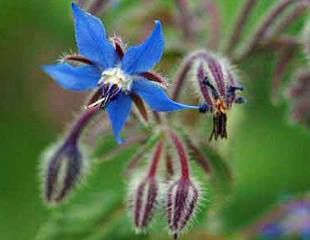
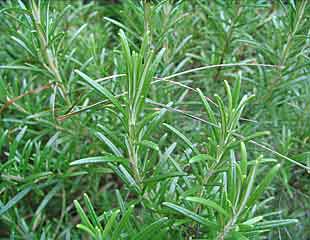
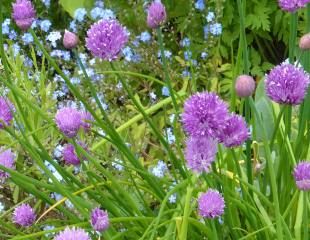
How to grow Herbs
There are herbs for growing in the sun, and for shade. Some are hardy and some are not. We often refer to herbs collectively, but herbs are a diverse group of plants. Planting different herbs together to make a herb garden may sound attractive, but it may not be ideal as it overlooks different growing requirements.
The Mediterranean type herbs are an example. You can plant herbs such as Rosemary, Thyme, and Sage together because they share common growing requirements. They have different growing requirements to say Chives, Parsley and Coriander, which dislike the baking heat and dry conditions which the Mediterranean herbs enjoy. These herbs need to be planted in a cooler spot with semi shade. Because they prefer different growing conditions, herbs are often better grown as ornamental plants mixing with many garden favourites and not limited being planted in one place such as a herb garden or vegetable plot.
Not enough sun in your garden ? Check out Herbs for Shade.
Growing Herbs in containers
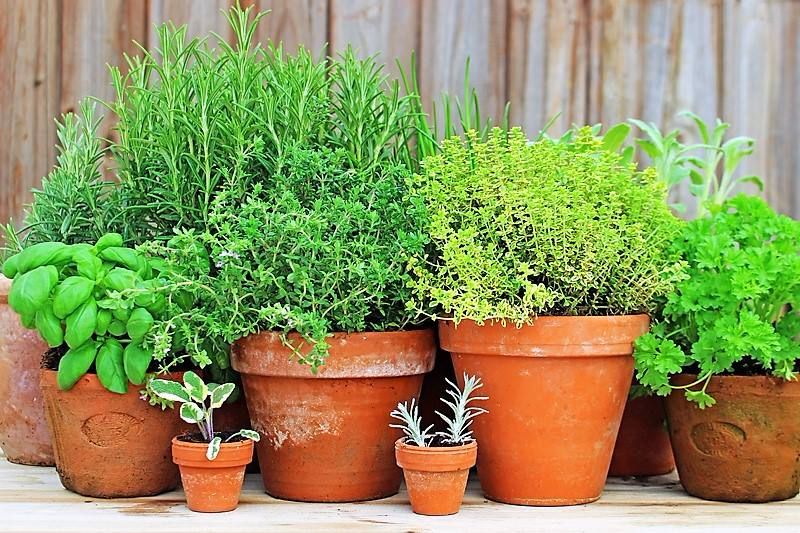
You can grow these herbs in containers on a windowsill or patio.
Growing mint in a container is necessary to prevent it from spreading and taking over all the space, considering its vigorous nature.
You can grow the Mediterranean herbs together in one large container or group them in single containers. Rosemary and Sage are physically the largest of the herbs and will outgrow a container requiring repotting after a couple of years. Some herbs, such as tarragon and Mint, are short-lived and will need replacing. Herbs look lovely in containers and make a pretty display for the cooks and the bees.
There are also some vegetables suitable for growing in containers.
Are you struggling to grow herbs from seed?
Lots of us struggle to grow herbs from seed. Germination and pricking out seeds is difficult and then you have to grow the seeds on in a warmish place. Parsley is notoriously hard to germinate. Coriander can be fickle, as is Dill.
There are two easier ways to create a herb garden: cuttings grown in water and plant division, you can even use herb plants bought from the supermarket- check out this video for more information no green fingers needed!
Growing Herbs Rosemary Thyme Oregano and Sage
These herbs are sun-loving plants and thrive in well drained or dry conditions in average soil. These herbs are not fussy about the soil conditions, provided the soil is not wet. They do not need rich soil and are good growing in walls, rockeries and containers.
Tips about growing Rosemary, the difference between the upright and trailing varieties and information about the best varieties to grow How to Grow Rosemary.
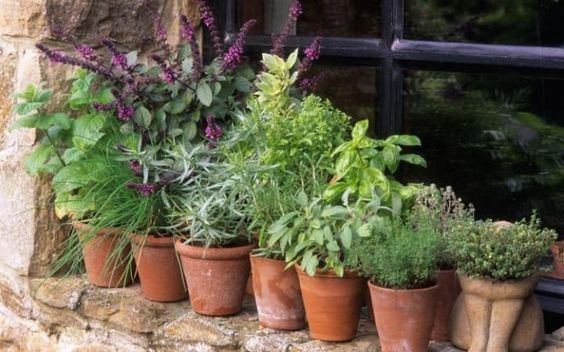
Growing Marjoram and Oregano
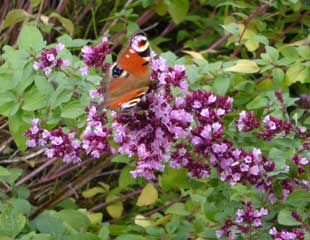
Oregano is a vigorous perennial which tends to self seed. It is easy to grow and absolutely adored by bees. In summer, the herb will hum with activity.
Growing conditions for Marjoram and Oregano are the same, essentially a dry spot with sun, although Oregano is much tougher and will grow in most places. In fact, the main drawback is that Oregano is a self seeder and pops up everywhere. It is vigorous, and you need to check it, but the bees and pollinators cannot get enough of it in the summer.
It's not cooked with widely, but as the image shows, it looks great and keeps the bees happy and busy in the garden. I remove the shoots of new plants as soon as I see them growing in the borders to keep the Oregano under control. Oregano is best cut back each spring and new growth will form. It can get quite large and is receptive to the Chelsea chop in May to make it more compact.
Below is an image taken at Beningbrough Hall a National Trust property in North Yorkshire with an interest incorporation of Oregano as topiary into a mixed border. It was a reoccurring theme within the border and looked effective.
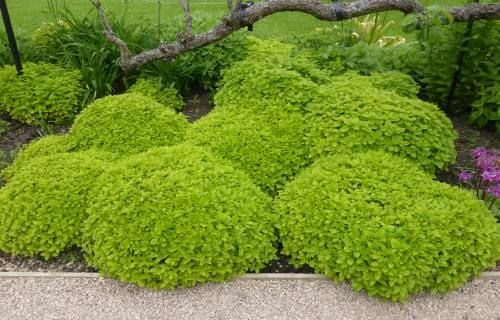
How to grow Italian and Thai Basil
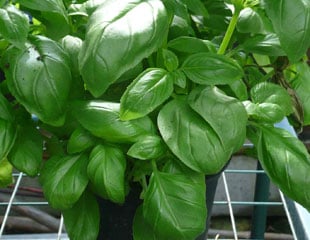
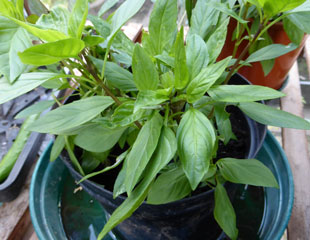
No herb garden is complete without Basil, with powerfully scented leaves a staple of so many lovely summer dishes.
Basil is a tender herb and needs a warm spot. It is best to grow Basil in the greenhouse or indoors until the summer picks up (if it does) and then find a warm sheltered spot on the patio is ideal. Basil is very tender and cannot be left outside over winter. Even if it is chilly, the leaves will discolour and develop light brown patches and tend to curl. Because Basil is so tender and likes it warm, I tend to keep it inside in the house or in a greenhouse until summer fully arrives.
Basil germinates easily from seed. To grow Basil from seed, just sprinkle 2/3 seeds into a small pot and create a mini propagator by covering the pot with a poly bag and securing with an elastic band. I also place a small pea stick or twig in the pot to hold the poly bag away from the plant. Fill the pot with good quality compost, mist with a water spray and cover the seed lightly with compost. Cover with the bag and seal and it will germinate easily within a few days if placed somewhere warm, such as a windowsill or greenhouse. (Video how to make a homemade propagator.) As soon as the seedlings appear, take off the polythene bag and grow on ensuring the plant does not dry out. Once it has reached a decent size and has good roots, which will take a few weeks, pot on into a larger pot and it is ready to provide you with pickings all summer long. You can make several sowings during late spring and early summer to ensure a supply all summer.
Just as easy to germinate and grow, and requiring very similar conditions, is Thai Basil, image above right, the traditional basil used in curries and Thai dishes. Thai basil has a distinct taste, aniseed in flavour, and is a great addition to Asian and Thai dishes. It is no more difficult than ordinary Basil to grow from seed, and it needs the same warm sheltered conditions. Thai Basil has the benefit of attractive purple flowers, although these are best removed rather than admired, because flowering will cause the plant to set seed and stop growing.
There are quite a few different types of Basil to choose from depending on your cooking requirements. Sweet Basil is the most widely grown, a good variety is 'Genovese'. Thai Basil 'Siam Queen' is widely sold and has lovely pink purples flowers. Greek Basil has much smaller compact leaves, and whilst there are several red/purple varieties, 'Purple Ruffles' is very attractive and could be planted in flower beds with it's lovely ruffled leaves.
It is important when growing Basil to keep removing its flowers, otherwise the plant will stop its production of leaves and come to a stop.
Growing Parsley
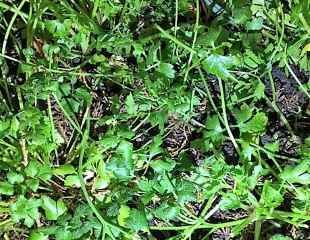
Every cook needs Parsley and the usual varieties grown and used in cooking are P.crispum which is the traditional curly leaved Parsley, and var.neapolitanum which is the French and Italian flat leaf variety, illustrated left.
The image left is not of the best Parsley I have ever grown, but what is interesting is that I took the image on 14th December, and the Parsley was still going strong with plenty of growth. The plant will survive, although there will be less and less growth.
Parsley can be tricky to germinate from seed, often slow, and sometimes it will not germinate. Parsley seeds need warmth, good rich soil and to be kept damp. Early in the year, the soil is too cold for Parsley to germinate easily and I would recommend sowing in the greenhouse or inside. The key to growing from seed is to ensure plenty of warmth, moisture, and patience, allow several days or weeks to germinate without the seed drying out. And if nothing happens, sow again (and if needs be again.)
EU regulations in relation to seeds (assuming the regs still apply, and who knows,) are such that there are minimum requirements for seed viability, which varies, but can be as low as 65% so not all the seed in the packet will germinate. This means if your seed doesn't germinate, it may not be your fault because at 65% viability, only just over half the seed in the packet has the propensity to germinate.
Growing Chives
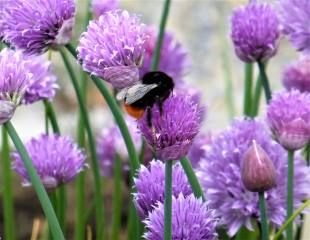
Chives are a member of the Allium family, easy to grow and the bees love them. Latin name is Allium schoneoprasum, fully hardy and tolerant of partial shade. Chives have lovely purple flower heads and also make an ideal edging plant and are suitable for growing at the front of a border, reaching a height of around 30-40cms. Because Chives are hardy, you can leave them out in the garden all the year round and they will be perfectly happy. They are also one of the few herbs which will tolerate partial shade. Chive flower heads are attractive to bees and are long lasting. Chives are a herbaceous perennial, which means they die back over the winter months and start growing again very early in the spring.
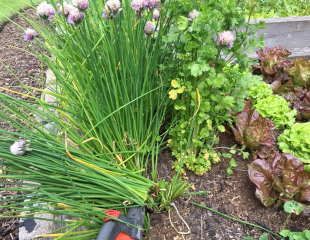
Often by mid summer around June time Chives can look a bit tatty with faded flowers as shown in the image left.
In June cut chives back and within a week or so there will be new fresh green growth and later a further flush of flowers. I cut the Chives in the image left back mid June and within a couple of weeks had good green growth, and new flower heads within a month.
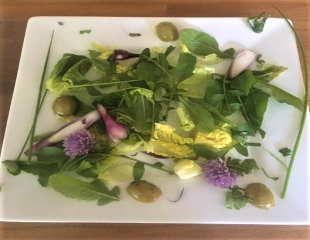
Chive flowers are edible and have become popular with the cooking trend of adding various flowers to salad dishes. Allium tuberosum is the Garlic flavoured chive, which has very similar growing requirements and has attractive white flowers. Both types of Chives will grow easily in full sun, or partial shade with no special soil requirements other than not to be waterlogged. Chives like so many herbs are easy to grow with little or no maintenance required.
One of the absolute best variety of chives to grow for bee attraction is an Allium variety called nutans, common name Siberian Chives. This video shows bees and pollinators attracted to Chives, and this variety.
Growing Mint
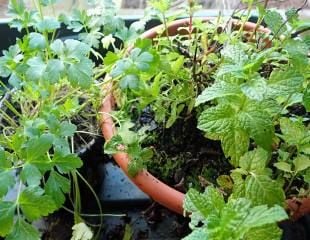
Mint is a vigorous, hardy, short-lived perennial herb which will happily look after itself. The problem with mint is that it is too vigorous and will take over, if left to its own devices. It sets out runners which will colonise an area quickly. I do not recommend planting it in the veg plot or border. Also, if planted with other herbs, it will overtake them. It is a herb thug and is much better grown in a container to control it.
Because it is short lived, after a year or so, Mint can look tatty, with unappetising leaves which become tough. Sometimes it can be best to treat it as an annual. I find it lasts longer if overwintered in the greenhouse (as in the image left alongside some parsley. ) There are now lots of different varieties of mint to choose from, such as Apple mint, Spearmint, Pineapple and Ginger Mint, and always best grown in a container. Mint is another herb which will tolerate partial shade.
Growing Bay
It is easy to decide which Bay to grow, as there is only one Laurus nobilis. Bay is often trained into topiary for decoration, looking smart in containers adorning front doorsteps, which can overlook the fact that Bay is a culinary herb and good for adding to stews and casseroles. One plant is often enough, and you can train it into a topiary shape, lollipops are popular, and still eat it!
Bay is not fully hardy, tolerant of temperatures down to -5 . For this reason Bay is best grown in a container which can be moved under cover to shelter over the winter. If left to its own devices, Bay will become a largish sized shrub, although slow growing, eventually around 10m.
Growing Tarragon
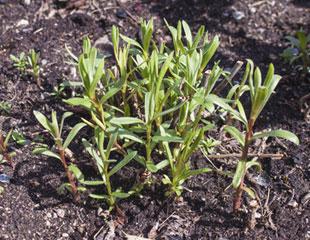
Tarragon is a great herb to grow, especially because it is not always readily available in the supermarket and has a lovely aniseed flavour. There are two types, French, which has the stronger flavour and Russian, which is hardier. French Tarragon not will survive outside over winter but can be overwintered in a greenhouse or conservatory, unless your garden is sheltered and it may survive covered with a good mulch.
Tarragon, Latin name Artemisia dracunculus, is part of the Artemisia genus which all have aromatic foliage, often grey or silver leaves which make attractive border plants. Tarragon needs to be grown in full sun, in a warm sheltered spot and in well-drained soil.
Tarragon is classified as fully hardy, though it thrives best in warmer spots and needs to be overwintered out of the frost and chill winds. French Tarragon does not often set seed and is usually grown from small plants. Russian Tarragon can be raised from seed although its flavour is different and personally I do not think it is anyway as nice as French Tarragon. French Tarragon can be propagated from cuttings and grown all the year round if kept under glass. Plants run out of steam after 2/3 years and will need replacing. Sometimes it is just easier to buy a couple of new plants each spring.
